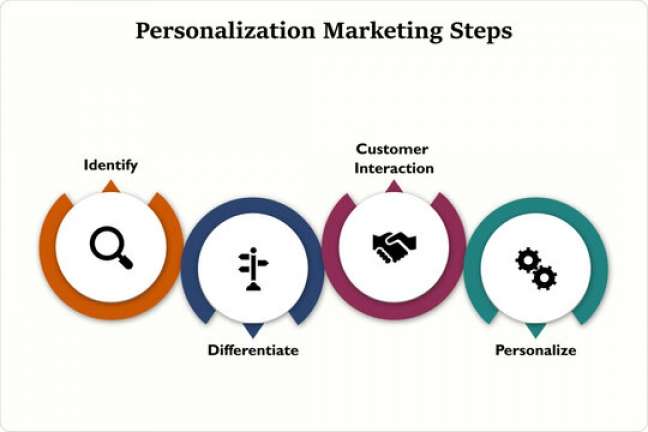In an era where well-being has become a paramount concern, building a perfect wellness website is not just a digital endeavor; it’s the creation of a digital haven where individuals seek knowledge, motivation, and support on their path to a healthier life. This article unfolds the essential steps to construct your ideal wellness website—a sanctuary that empowers, educates, and connects. Whether you’re a seasoned wellness enthusiast or a novice, this guide will navigate you through the key phases of wellness website development, bringing your vision of wellness to life in the online world.
Define Your Wellness Focus
Choose your wellness niche.
Selecting a wellness niche is like setting the compass for your digital journey. It defines the specific area of well-being that your website will concentrate on. Here’s how to go about it:
- Identify Your Passion: Start by reflecting on your passions and interests within the wellness realm. What aspect of well-being excites and motivates you the most? It’s essential to choose a niche that aligns with your enthusiasm.
- Market Research: Investigate the market to understand what wellness niches are in demand and underserved. Look for areas where your expertise and passion intersect with a gap in the market.
- Consider Your Expertise: Your wellness niche should align with your knowledge and expertise. It’s easier to create meaningful content and engage with your audience when you are well-versed in the chosen niche.
- Evaluate Trends: Examine current wellness trends and foresee their longevity. Trends may guide your niche selection, but remember to prioritize long-term value over short-lived fads.
Understand your audience.
- Create User Personas: Develop user personas that represent your target audience. These personas should encapsulate key demographic information, interests, challenges, and goals. Personas help you tailor content and features to meet the needs of your audience.
- Surveys and Feedback: Gather insights through surveys and feedback. Engage with your potential audience to understand their preferences and pain points. Their input can provide valuable guidance in shaping your website.
- Competitor Analysis: Study competitors in your chosen wellness niche. Analyze the content and features that resonate with their audience. This analysis can inform your approach and help you stand out in the digital landscape.
- Diverse Perspectives: Recognize the diversity within your target audience. Wellness encompasses a wide range of people with unique backgrounds, needs, and goals. Strive to create content and features that cater to a broad spectrum of users.
Build a Strong Foundation
Creating a wellness website is a journey that begins with building a robust foundation. This foundation involves two vital steps: creating your website and selecting a fitting domain name. In this article, we’ll delve into these critical building blocks that pave the way for your wellness website to thrive in the digital landscape.
Creating your own website
- Choose a Website Building Platform: There are several website-building platforms available, such as WordPress, Wix, and Squarespace. These platforms offer user-friendly interfaces and templates that simplify the website creation process, even for those with limited technical knowledge.
- Select a Hosting Service: To make your website accessible on the internet, you’ll need a hosting service. Hosting providers like Bluehost, SiteGround, or HostGator offer services to store your website’s data and make it accessible to users.
- Pick a Template or Theme: Website-building platforms provide a variety of templates and themes that determine the overall look and layout of your site. Choose a design that aligns with the wellness niche and the audience you’ve defined in your previous steps.
- Customize Your Website: Personalize your website by adding content, images, and multimedia elements. Ensure that the design is user-friendly, with clear navigation, and responsive to different devices.
- Add Essential Pages: Create fundamental pages that every wellness website should have, such as an about page, a contact page, and a homepage that introduces your wellness focus.
Pick a fitting domain name.
- Reflect Your Wellness Niche: Your domain name should reflect the niche you’ve chosen for your wellness website. It’s an opportunity to communicate to users what your website is about.
- Keep it Short and Memorable: Choose a domain name that is concise and easy to remember. Lengthy or complicated domain names can be challenging for users to recall.
- Include Keywords: If possible, incorporate relevant wellness keywords into your domain name. This can improve search engine optimization (SEO) and help users find your website more easily.
- Avoid Copyright Issues: Ensure that your domain name doesn’t infringe on trademarks or copyrights. Check domain name registrars for availability and potential conflicts.
- Choose the Right Domain Extension: Domain extensions like .com, .org, or .net are commonly used and familiar to users. While other extensions are available, these are generally considered more trustworthy.
- Check Social Media Availability: Ensure that the chosen domain name is available on social media platforms. Consistency across your website and social media profiles is essential for branding.
Craft Effective Content
Create actionable wellness content.
Wellness seekers are not just looking for information; they are on a quest for actionable advice that can improve their lives. Here’s how to create content that empowers them to take meaningful steps:
- Evidence-Based Information: Start by providing information that is rooted in evidence. Wellness seekers are discerning individuals who value content based on scientific research, expert insights, and proven best practices. Citing reliable sources adds credibility and trust.
- Relatability Through Personalization: Wellness is a highly personal journey. Users appreciate content that resonates with their unique needs and experiences. Crafting relatable content often involves segmenting your audience and tailoring information to specific demographics, wellness goals, or common challenges.
- Practical Tips and Recommendations: Actionable content should provide practical tips and recommendations that users can readily incorporate into their lives. Whether it’s healthy recipes, workout routines, or stress-reduction techniques, focus on advice that sparks motivation and fosters engagement.
- Real Stories and Anecdotes: Personal stories and anecdotes can have a profound impact. Sharing success stories, struggles, and experiences of real individuals not only motivates but also creates a sense of community. Users find inspiration and connection in the journeys of others.
Enhance engagement with multimedia.
Wellness content can be made even more compelling and informative by incorporating multimedia elements. Here’s how to effectively leverage multimedia for user engagement:
- Visual Appeal: Visual elements, such as images, infographics, and videos, add a dynamic dimension to wellness content. They not only enhance visual appeal but also help convey complex health information in a more digestible format.
- Video Content: Videos are excellent for demonstrating exercises, cooking techniques, or wellness practices. Visual demonstrations are not only educational but also engaging. Consider creating video content that provides step-by-step guidance or showcases success stories.
- Infographics: Infographics are ideal for summarizing key wellness tips and statistics. They offer an efficient way to present information in a visually appealing and easily understandable format.
- Podcasts: Audio content, in the form of podcasts, is perfect for wellness seekers on the go. They provide an alternative way to consume wellness information.
- Interactive Tools: Consider incorporating interactive tools like fitness trackers, meal planners, and self-assessment quizzes. These tools actively involve users and provide a sense of empowerment and motivation.
Read More: How Can I Hire a Reliable Link Building Specialist
Engage Users
Add interactive tools and forums.
Interactive tools and forums are the lifeblood of user engagement on wellness websites. They empower users, facilitate discussions, and create a sense of community. Here’s how to use them effectively:
- Discussion Forums: These digital spaces allow users to converse, ask questions, share experiences, and offer support. Ensure your forum categories align with your wellness niche and encourage active participation.
- Social Media Integration: Connect your website with social media platforms, allowing users to easily share content and engage with comment sections in blog posts and articles.
- Interactive Tools: Consider including fitness trackers, meal planners, or self-assessment quizzes to provide resources and encourage user participation.
- Live Events: Host webinars and Q&A sessions with wellness experts to offer real-time engagement opportunities.
Foster community support.
A sense of community is vital for wellness websites, offering encouragement, inspiration, and a sense of belonging. Cultivating community support involves these key elements:
- Moderation: Ensure forums and interactive features are well-moderated to maintain a positive atmosphere and address issues.
- User-Generated Content: Encourage users to contribute content, from success stories to wellness tips, enriching the community.
- Challenges and Goals: Create challenges and goal-setting activities to add motivation and a sense of progress.
- Support Groups: Form wellness support groups based on specific interests or goals.
- Newsletters and Updates: Keep users engaged with regular newsletters, sharing the latest insights and upcoming events.
Conclusion
In the quest to build the perfect wellness website, we’ve journeyed through defining your focus, creating a strong foundation, crafting effective content, and engaging users. The digital haven you’re crafting isn’t just a website; it’s a dynamic community that empowers, educates, and supports individuals on their path to well-being.
With a clear wellness niche, a well-structured foundation, actionable content, and engaging features, you’re well on your way to creating a digital sanctuary that resonates with your audience. As you foster community support and encourage active participation, your wellness website becomes more than a source of information—it becomes a beacon of motivation and empowerment.
Remember, your wellness website is more than a digital space; it’s a platform for positive change in the lives of your users. Whether they seek knowledge, motivation, or support, your website is there to guide them toward a healthier and more vibrant life. As you embark on this digital well-being journey, you’re not just building a website; you’re empowering well-being, one click at a time.
















